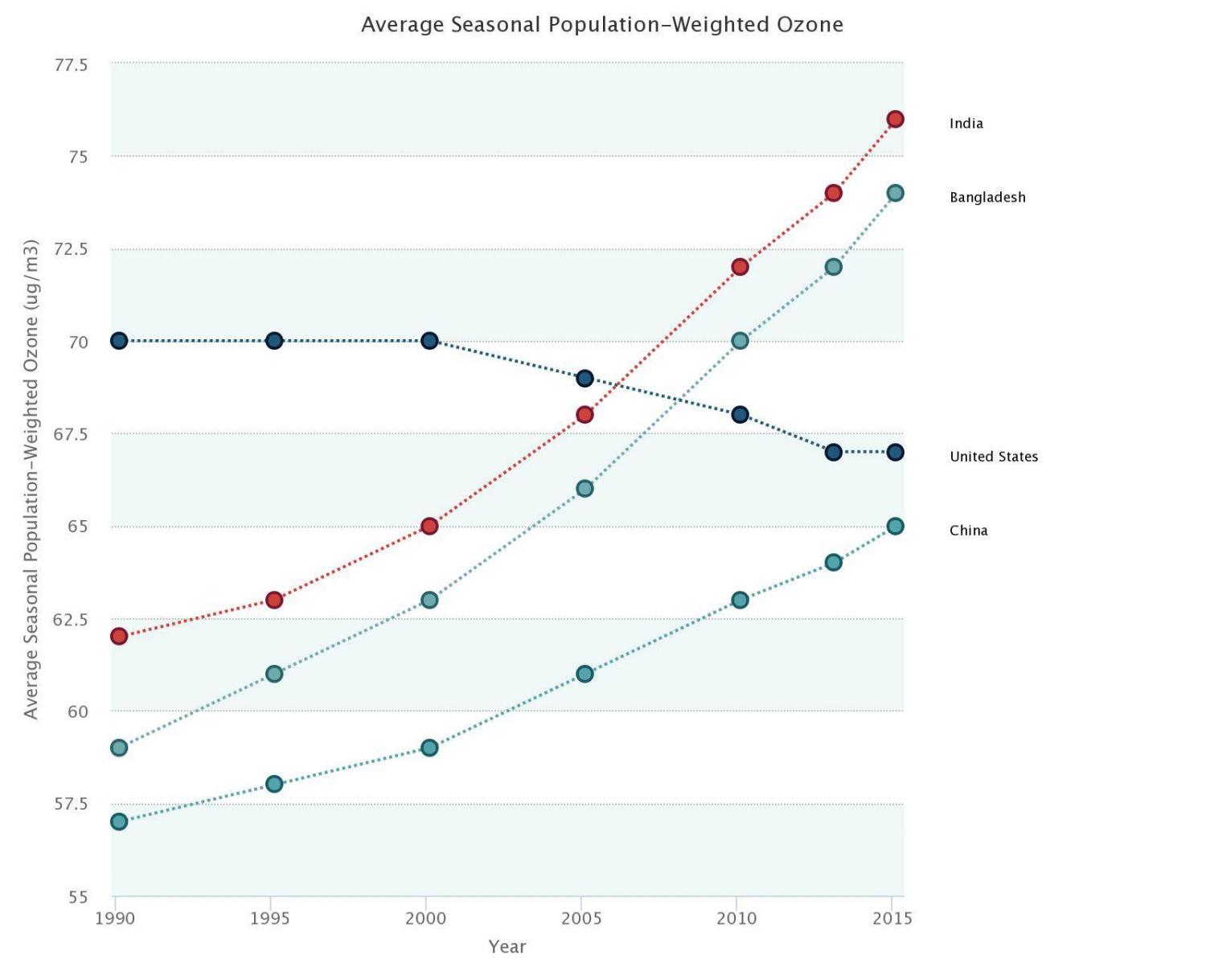
India has become one of the world’s hottest solar markets. According to news outlets including Bloomberg, the aggressive renewables goals pushed by Prime Minister Narendra Modi led to 4.5 gigawatts of new solar power capacity last year. That number is expected to almost double this year.
Unfortunately, the surge in India’s clean-energy markets is too late for the approximately 1.1 million citizens who suffer premature deaths linked to air pollution each year, according to a recent study.
The State of Global Air, a joint project of Boston-based Health Effects Institute and Seattle's Institute of Health Metrics and Evaluation (IHME), suggests that annual premature deaths attributed to air pollution have doubled in India since 1990. The overall air quality in country worsened when compared to China, long known for its air pollution problems. And in sheer numbers, India’s air is becoming the deadliest on Earth.
The problem is particulate matter that is 2.5 microns or smaller, generally referred to as PM2.5. According to the study, India and its neighbor, Bangladesh, have seen air pollution levels surge since 2010 and are now burdened with the highest PM2.5 concentrations in the world.
Medical researchers have concluded that exposure to PM2.5 can result in premature death from obvious causes such as lung cancer and respiratory diseases. But because these particles -- which are a fraction of the width of a human hair -- can easily enter the bloodstream, they are also linked to deaths that result from stroke and heart failure.
PM2.5 particles are released by exhaust pipes, especially those connected to diesel engines, industrial sites and cookstoves, the latter of which are still common across rural India. While cities such as Delhi and Mumbai have become notoriously polluted, the use of cookstoves, as well as diesel vehicles and generators, in rural India has also contributed to health problems in these regions. Therefore, while solar has been cheaper than diesel fuel in rural India for several years, the country’s exacerbated health crisis is also helping to make the case for the deployment of more clean-energy development across the country of 1.3 billion people.
But unless cleaner sources of energy can scale across India, watch for deaths related to air pollution to increase for some time. IHME linked 4 million deaths worldwide to PM2.5 in 2015, with over half of those lives claimed in China and India. Both countries anchor a region, one stretching from the Atlantic shores of North Africa across the Middle East and to China, which reports the highest concentration of deaths from PM2.5 exposure.
This same study also found an increase in deaths due to ozone exposure. While the total number of deaths is not nearly as dramatic as the rate of deaths from PM2.5 particles, ozone has also emerged as another large health problem in India. Since 1990, there has been a 60 percent increase in ozone exposure-related deaths, with two-thirds of that increase occurring in India alone.
Several factors explain India’s worsening air quality and its surge in deaths related to pollution.
Its rapidly expanding economy is the envy of much of the world, but that growth has come with a huge social cost. The country’s stubborn poverty, with many rural Indians still lacking reliable access to safe sources of energy, has not helped. But weak legal enforcement is also to blame.
For example, India established its National Green Tribunal as a tool to strengthen the country’s environmental protection. Nevertheless, despite the fact that this environmental court has outlawed common practices such as stubble burning (setting fire to agricultural waste after crops such as grains are harvested), local news outlets report that the practices continue unabated across India, with local officials unwilling or unable to stop them.
Image credit: Leon Kaye
Chart credits: StateOfGlobalAir.org

Leon Kaye has written for 3p since 2010 and become executive editor in 2018. His previous work includes writing for the Guardian as well as other online and print publications. In addition, he's worked in sales executive roles within technology and financial research companies, as well as for a public relations firm, for which he consulted with one of the globe’s leading sustainability initiatives. Currently living in Central California, he’s traveled to 70-plus countries and has lived and worked in South Korea, the United Arab Emirates and Uruguay.
Leon’s an alum of Fresno State, the University of Maryland, Baltimore County and the University of Southern California's Marshall Business School. He enjoys traveling abroad as well as exploring California’s Central Coast and the Sierra Nevadas.














